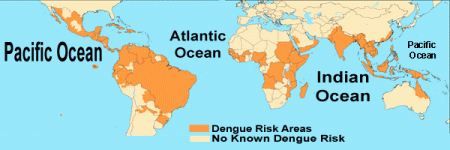
A recent Miami Herald article sparked my interest for the small insect. Its name is Aedes Aegypti, one of the 3500 mosquito species identified so far, known for spreading dengue fever, but also the Chikungunya and yellow fever viruses.
The Miami Herald article describes how Mexico is currently struggling to counter a resurgence of dengue fever. It is not the only Latin American country dealing with the buzzing issue. Brazil and Argentina have apparently reported record numbers of cases this year.
At first, hearing about yet another disease striking Mexico alarmed me. It was only after reading more on the issue – as in the case of the H1N1 virus – that I was settled. Dengue fever has a relatively low death rate. Only 2.5 percent of hospitalized patients do not survive the disease. However, the tropical febrile disease is particularly costly, with patients requiring constant and long-term monitoring. Therefore, in the case of Mexico this we know for sure: The spreading disease will strike tourism and the economy as a whole yet another blow.
With the fever increasing rapidly in tropical and subtropical areas, we ask: What can be done against the dangerous disease and its carrier – the mosquito? Researchers all over the world are testing dengue fever vaccines and at the same time considerable efforts are being invested in mosquito eradication.
Of the existing population policies and programs the ones of Singapore appear to be the most developed ones. After the 2005 dengue outbreak the country launched enhanced measures, including the introduction of fines for those who allow mosquitoes to breed in their homes and also for those found with standing water at construction sites (standing water being the larval hatching grounds of the Aedes Aegypti).
